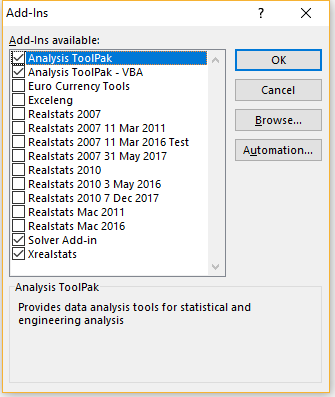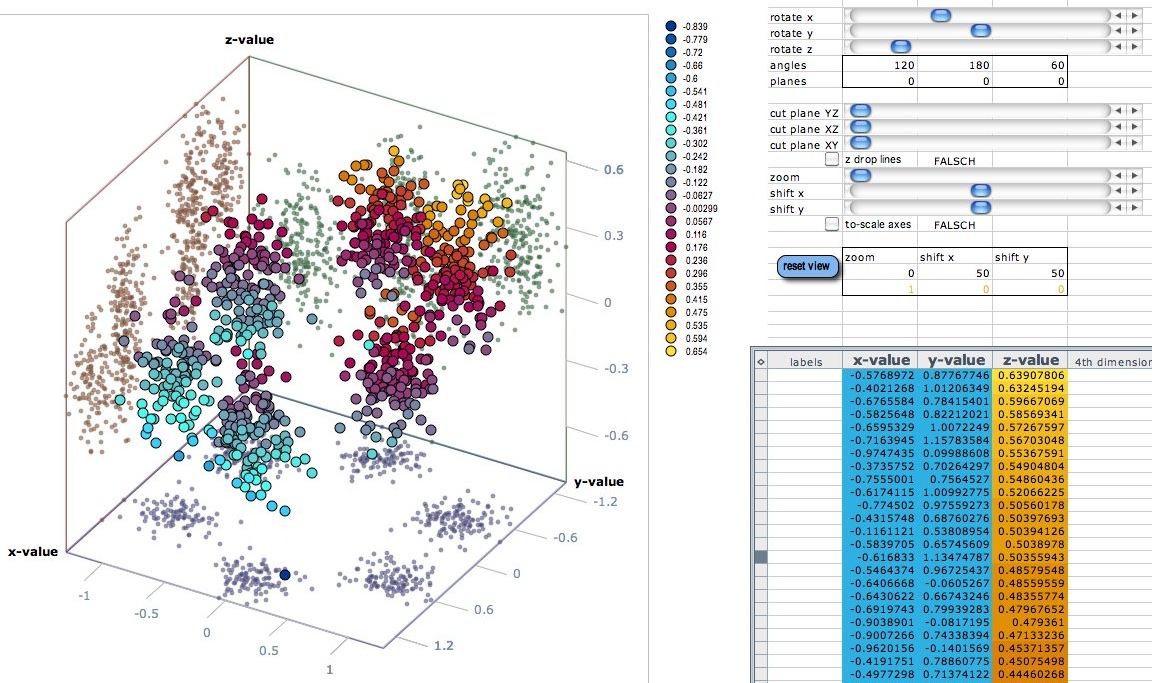

- EXCEL FOR MAC VBA CORRELATION HOW TO
- EXCEL FOR MAC VBA CORRELATION MAC OS
- EXCEL FOR MAC VBA CORRELATION CODE
- EXCEL FOR MAC VBA CORRELATION WINDOWS
To add code in a module you need to use the SUB procedure or the FUNCTION procedure. You will be writing most of the VBA code in a module.

Let’s suppose if you want to run code when you double click on a cell, in that case, you need to use the double click event and you need to add code to that worksheet.
EXCEL FOR MAC VBA CORRELATION WINDOWS
There are two different types of code windows and both look just the same but there is a difference that you need to know.
EXCEL FOR MAC VBA CORRELATION HOW TO
Using VB Editor to Write a CodeĪt this point, you know all the major components of VBA editor, so now let’s learn how to add a code in it. You can use the Locals window in VBE to displays all declared variables in the current procedure and their present values. You can also use the CASE SENSITIVE search and decide the direction of the search as well. The find and replace option in VBE gives you different search patterns, like, if you want to find and replace something from the current procedure, from the current module, or from the current project.

In fact, all Microsoft applications that host VBA use the Visual BasicĮditor for script writing (writing a code). Visual Basic Editor is the only way to write a VBA code inĮxcel. Even though it is a sperate application (VB Editor) you can only use it with Excel. In simple words, it’s a code editor for Excel in which you can write all the macros and store them. Visual Basic Editor is an application (a separate) in which you can write and save all the VBA codes. I will be using different words (VBA editor, VB editor, or VBE) in this guide for referring to the Visual Basic Editor, so don’t be confused with it. That’s why it’s part of our VBA tutorial and in this guide, we have covered every single aspect of Visual Basic Editor to make you understand it’s functionality. It’s the place where you write and manage all the macro codes and if you ask me about VBE, I’d say if you are serious about learning VBA you need to understand all the components of VBE. The world of VBA starts with the Visual Basic Editor (VBE). "OLEDB Provider=.1 Data Source=$Workbook$ Location=SampleList Extended Properties=""""" _ "RenamedColumns = Table.RenameColumns(ConvertedToTable,)" & vbCr & vbLf & _ "ConvertedToTable = Table.FromList(Source, Splitter.SplitByNothing(), null, null, ExtraValues.Error)," & vbCr & vbLf & _ This is a sample query that creates a list with values from 1 to 100.Ī Name:="SampleList", Formula:= _ Here is some basic code you can adapt and use. Locate the VBA file, and then select Open. Right-click on an object in the Project window, and then select Import File. In Excel for Mac, select Tools > Macro > Visual Basic Editor.
EXCEL FOR MAC VBA CORRELATION MAC OS
For more information, see Sync files with OneDrive on Mac OS X.ĭownload the VBA file to a local file, the VBA file you saved in "Step one: Excel for Windows" and uploaded to an online service. Upload the VBA file to an online service to make the file accessible from the Mac. The Export dialog box appears.Įnter a filename, make sure the file extension is. Right-click the module, and then select Export File. In Excel, make sure the Visual Basic Editor is open by pressing ALT+F11. VBA code that uses the following entities in the Excel's object model also work in Excel for Mac: Queries object, WorkbookQuery object, Workbook.Queries Property. For more information, see Excel VBA reference.

On Excel Windows, develop queries by using VBA. A sample program is provided for you at the end of this section. Transferring a VBA code module in a file from Excel for Windows to Excel for Mac is a two-step process. Although authoring in the Power Query Editor is not available in Excel for Mac, VBA does support Power Query authoring.


 0 kommentar(er)
0 kommentar(er)
